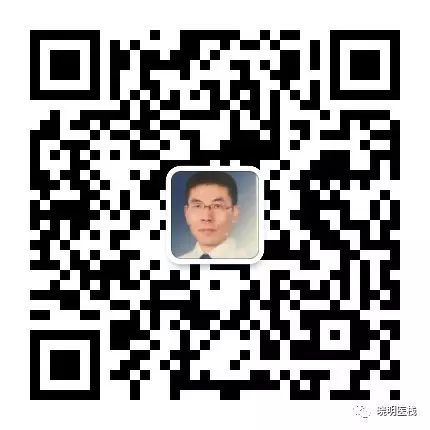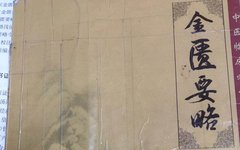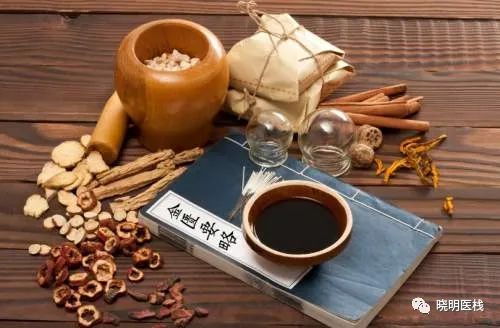
Half a year ago, I finished memorizing the “Treatise on Cold Damage” (Shang Han Lun), and for the past four months, I have been reciting the “Essentials of the Golden Coffer” (Jin Gui Yao Lue). While memorizing the “Treatise on Cold Damage,” I felt a sense of “overexertion” as I did not let a single word go, which deviated from the TCM principle of “moderation and harmony.” Therefore, this time with the “Essentials of the Golden Coffer,” I do not seek to memorize it forcefully, but rather to recite it daily, progressing through each section until I become familiar with it.
1. The Origin of the Name and Versions of the “Essentials of the Golden Coffer”

The book by Zhang Zhongjing was originally titled “Treatise on Cold Damage and Miscellaneous Diseases” (Shang Han Za Bing Lun) and did not have the name “Essentials of the Golden Coffer“. According to the remnants of Chen Yanzhi’s “Xiao Pin Fang” from the late Eastern Jin Dynasty, it is recorded: “Zhang Zhongjing’s ‘Differentiation of Cold Damage’ and its formulas have nine volumes… Zhang Zhongjing’s ‘Miscellaneous Formulas’ has eight volumes.” This shows that by the late Eastern Jin Dynasty, the “Treatise on Cold Damage and Miscellaneous Diseases” had already begun to circulate in two parts. Subsequently, during the Northern Song Dynasty, Lin Yi and others began to compile the “Golden Coffer Formulas”. Its preface states: “Hanlin scholar Wang Zhu found three volumes of Zhang Zhongjing’s ‘Essentials of the Golden Coffer’ among the worm-eaten manuscripts, the first volume differentiates cold damage, the second discusses miscellaneous diseases, and the third contains formulas, including treatments for women. He recorded and transmitted it to scholars, but only a few families. … It was still named ‘Golden Coffer Formulas’.” In the early Ming Dynasty, a manuscript by ‘Wu Qian’ included a Northern Song ‘Guozi Jian Diewen’, which states: “On June 25, in the first year of Shaosheng (1094), … this place sold the following five medical books, including ‘Qian Jin Yi Fang’ and ‘Essentials of the Golden Coffer’, which are essential for daily use.” This indicates that the name “Essentials of the Golden Coffer” existed in the Northern Song Dynasty.
The Song version has now been lost. The earliest existing version is the Yuan Dynasty edition by Deng Zhen, published in 1340 based on the Northern Song version, titled “New Compilation of Golden Coffer Formulas”. Later, during the Ming Zhengde period, an anonymous person imitated the Song version of the “Golden Coffer Formulas”, naming it “New Compilation of the Essentials of the Golden Coffer”, adding the words “Essentials”. Subsequently, the Ming Jiajing Yu Qiao edition, the 1598 “Complete Book of Medical Principles” Xu Rong edition, and the 1599 “Complete Works of Zhongjing” Zhao Kaimei edition were all based on the Deng Zhen edition. However, the source of the early Ming 1395 Wu Qian manuscript version is unclear and differs significantly from the Deng Zhen edition (refer to Qian Chaochen’s “Study of Historical Figures in Chinese Medicine”).
The book I am using for recitation is the “Essentials of the Golden Coffer” compiled by Ren and He Ruoping. This book has many errors, such as the clause “If the pain is in the joints and cannot bend or stretch, use Wu Tou Decoction (Wu Tou Tang)” is missing; “If there is swelling below the waist, one should promote urination; if there is swelling above the waist, one should induce sweating to recover,” where the terms “above” and “below” are misplaced; and the Yiyiren (Coix Seed) and Fuzi (Aconite) powder is written as “Yiyiren Fuzi San”.
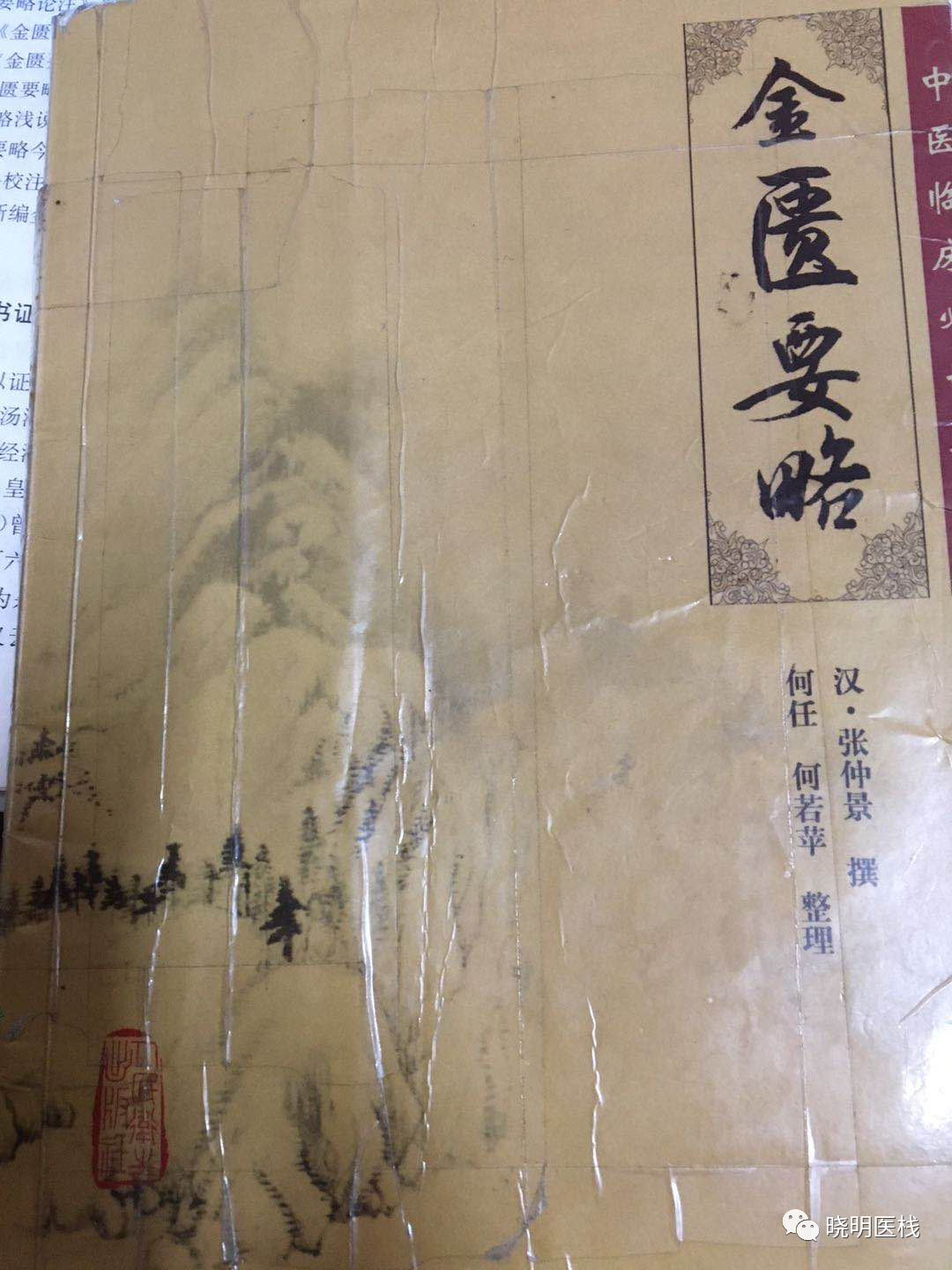
2. Related Works on the “Essentials of the Golden Coffer”

Compared to the hundreds of annotations on the “Treatise on Cold Damage”, the number of annotations on the “Essentials of the Golden Coffer” is relatively small. According to Li Shunbao’s “Bibliography of Surviving Works Related to the ‘Essentials of the Golden Coffer'”, as of 1911, there were about 40 works related to the Golden Coffer. The earliest was Zhao Yide’s “Commentary on the Golden Coffer Formulas” from the Yuan Dynasty, which provides detailed annotations for each clause, but some chapters are missing annotations, likely due to loss. Many discussions in this book are enlightening, such as “If a person is thin, it is due to their inherent constitution, or due to illness causing weight loss. Those of the Metal, Earth, and Water constitutions tend to be fat; those of the Fire and Wood constitutions tend to be thin,” highlighting the key points of constitution differentiation. It discusses the treatment of the “Yue Bi Decoction” (Yue Bi Tang) stating: “The spleen is the root of nourishment, and the stomach is the source of defense… Therefore, the sweet and warm properties of Ma Huang (Ephedra) travel through the Taiyin meridian to the skin, moving Qi in the three Yin to dispel the evil of Yin cold; the sweet and cold properties of Shi Gao (Gypsum) travel from the Qi level through the Yangming meridian to the muscles, moving Qi in the three Yang to dispel the evil of wind-heat.” It also states: “The spleen transports the Qi of grains to the three Yin, and the stomach transports the Qi of grains to the three Yang.” It discusses hemoptysis, stating: “Water, when encountering cold, sinks down; when encountering wind, it surges up. The blood in the human body is no different from water; if it encounters a harmonious cold, it resides in the meridians, nourishing the five organs; if it encounters a harsh cold, it coagulates and does not flow, accumulating and not dispersing. If it encounters a harmonious heat, it flows through the meridians, filling the nine orifices; if it encounters excessive heat, the wind becomes frenzied, causing surges. From this, we can see that hemoptysis is due to wind-fire.”
Due to the loss of Zhao Yide’s annotations, in 1687, Zhou Yangjun supplemented annotations based on Zhao Yide’s work, titled “Two Commentaries on the Golden Coffer and Jade Box”. Other earlier annotations include Zhang Zhizong’s “Annotations on the Essentials of the Golden Coffer”, Xu Bin’s “Commentary on the Essentials of the Golden Coffer” from 1671, Cheng Lin’s “Direct Explanation of the Essentials of the Golden Coffer” from 1673, Li Yuan’s “Extensive Annotation of the Essentials of the Golden Coffer” from 1682, Shen Mingzong’s “Zhang Zhongjing’s Essentials of the Golden Coffer” from 1692, Wei Litong’s “Fundamental Meaning of the Golden Coffer Formulas” from 1720, You Zaijing’s “Heart Classics of the Essentials of the Golden Coffer” from 1729, Gao Xueshan’s “Gao’s Annotations on the Essentials of the Golden Coffer”, Wu Qian’s “Corrected Annotations on the Essentials of the Golden Coffer” from 1742, Huang Yuanyu’s “Suspended Explanations of the Golden Coffer” from 1748, Chen Xiuyuan’s “Brief Annotations on the Essentials of the Golden Coffer” from 1803, Zhu Guangbei’s “Justification of the Essentials of the Golden Coffer” from 1805, and Tang Zonghai’s “Brief Annotations and Corrections on the Essentials of the Golden Coffer” from 1890, as well as Cao Yingfu’s “Essentials of the Golden Coffer”.
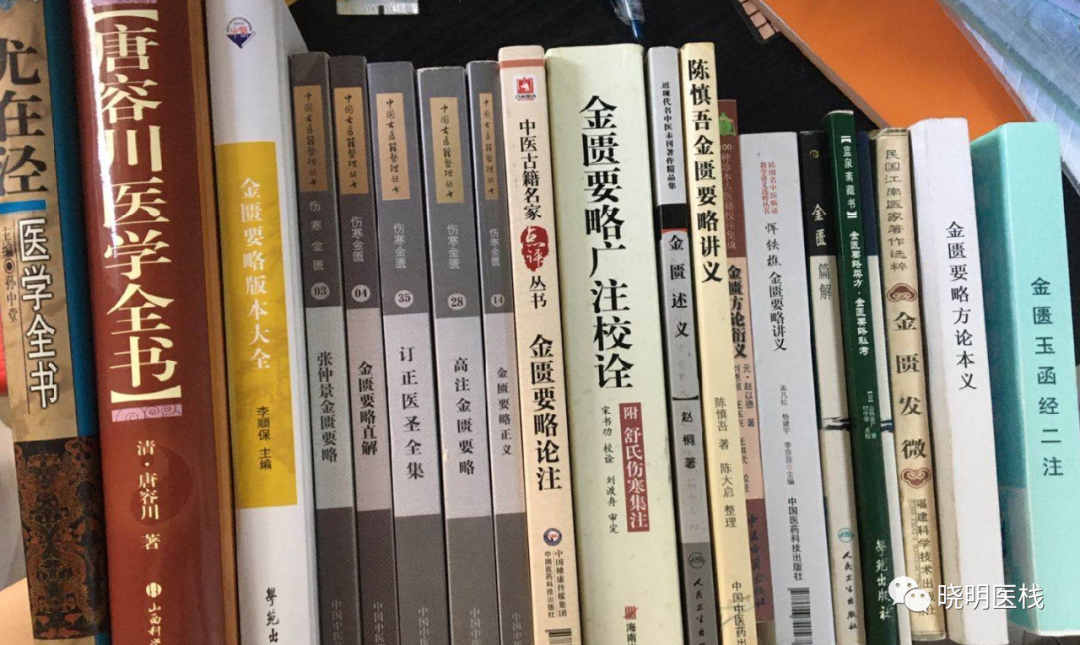
Master Yin has recommended some annotations on TCM classics (as shown in the image below), but the “Essentials of the Golden Coffer” is notably absent. Later, Master Yin mentioned in class that Li Yuan’s “Extensive Annotation of the Essentials of the Golden Coffer” is of high quality. Gao Xueshan’s “Gao’s Annotations on the Essentials of the Golden Coffer” is also based on Li Yuan’s work.
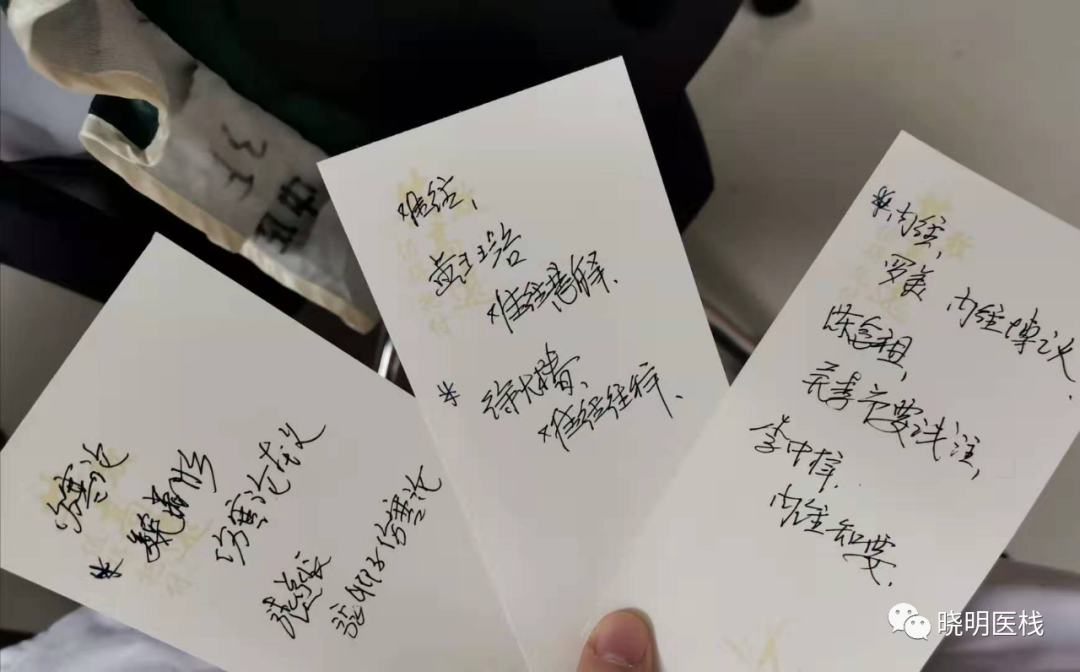
3. Related Works on the “Essentials of the Golden Coffer”

Compared to the “Treatise on Cold Damage”, the “Essentials of the Golden Coffer” focuses more on the differentiation and treatment of specific diseases, with a more scattered overall structure, lacking a macro system like the “Six Meridians Differentiation”. Few annotators have attempted to use the six meridians of cold damage to encompass the miscellaneous diseases of the Golden Coffer, with Chen Xiuyuan being a slight exception. Chen Xiuyuan states in the “Brief Annotations on the Essentials of the Golden Coffer – Reading Method”: “The ‘Essentials of the Golden Coffer’ is a book by Zhongjing for treating miscellaneous diseases, which complements the ‘Treatise on Cold Damage’. However, scholars must first read the ‘Treatise on Cold Damage’ before reading this book to understand it. The changes in diseases are not outside the six meridians. The six meridians of the ‘Treatise on Cold Damage’ are the six meridians of all diseases, not just cold damage. The ‘Golden Coffer’ has already stated clearly in the ‘Treatise on Cold Damage’, so there is no need to repeat it. Readers should follow the evidence to determine the six meridians as the main framework, and then authenticate the prescriptions to grasp the true essence.” In the section on spasms and damp heat, he states: “Dampness is one of the six evils; if it invades the Taiyin, it transforms into cold dampness, causing the disease to flow into the joints and resulting in bi syndrome; if it invades the Yangming, it transforms into damp heat, and the heat becomes more intense, leading to spasms and rigidity.” In analyzing chest bi syndrome, he states: “Chest bi syndrome is due to the deficiency of the fire of the hand Shaoyin, causing the Yin Qi of the foot Shaoyin to rise.” In discussing the Fangji Huangqi Decoction, he states: “The Taiyang is the meridian of cold water; if the disease obstructs the flow of water, it must transform into dampness and cause distension.” This shows that Chen Xiuyuan has begun to consciously attempt to use the six meridians to analyze the miscellaneous diseases of the Golden Coffer, but it is still not deep or systematic enough.
Master Yin has implemented a more systematic and thorough approach to integrating the six meridians with the Golden Coffer. Taking the example of Taiyang disease and water qi disease, as previously mentioned in Chen Xiuyuan’s text, if the Taiyang cold water is obstructed, it leads to dampness and water retention, thus the section on water qi disease in the “Essentials of the Golden Coffer” lists many formulas that have the function of opening the Taiyang, such as Yue Bi Decoction, Gan Cao Ma Huang Decoction, Xing Ren Decoction, and Gui Zhi Jia Huang Qi Decoction. Furthermore, the Taiyang and Shaoyin are interrelated; as Master Yin states: “The water of the Taiyang bladder is warmed by the true Yang of the Shaoyin kidney, allowing Qi to rise and reach the surface, where it is distributed by the Yang of heaven, circulating through the skin and muscles, entering and exiting the chest cavity, and descending to the five organs and ears.” Therefore, the water qi disease section also includes many warming Shaoyin medicines, such as Ma Huang Fuzi Decoction and Gui Zhi Qu Shao Yao Jia Ma Huang Xi Xin Fuzi Decoction. Additionally, the metabolism of water and fluids is not only related to Taiyang and Shaoyin but also has connections with Shaoyang and Taiyin, as Master Yin states: “Thus, the Taiyang governs water, not only as a force but also because its Qi governs the Wei Qi, relying on the heart and lungs above, the spleen and stomach in the middle, and the liver and kidneys below, coordinating the Shaoyang fire, ascending and descending, and spreading out through the skin and pores as sweat, and descending through the bladder and small intestine as urine, thus forming the flow of water and Qi.” Therefore, the water qi disease section differentiates the water of the heart, liver, lungs, spleen, and kidneys, with formulas like Fangji Huangqi Decoction, Fangji Fuling Decoction, and Zhi Zhu Decoction that benefit the Taiyin and Sanjiao.
Taking Yangming disease and chest bi syndrome as another example, there are many discussions about Yangming disease in the “Treatise on Cold Damage”, but later interpretations of Yangming disease mostly do not go beyond the confines of the “Treatise on Cold Damage”, believing that Yangming disease is merely a matter of the stomach and intestines, with formulas like Bai Hu Decoction, Chengqi Decoction, and Zhi Zi Chi Decoction. This is the result of only reading the “Treatise on Cold Damage” and not the “Inner Canon”. Master Yin’s discussion of Yangming disease is based on the “Suwen” stating: “Yangming is the closure” and “Two Yangs combine to illuminate”, clearly proposing a broad concept of Yangming, where Yangming disease is no longer limited to the stomach and large intestine, but primarily involves the stomach and intestines, the front chest, and the head and face, encompassing the foot Yangming stomach, hand Yangming large intestine, hand Taiyin lung, hand Shaoyin fire, hand Jueyin heart protector, Shaoyang fire, and ancestral Qi, greatly broadening the differentiation approach to Yangming disease. As Master Yin states: “The Shao and Tai two Yangs combine and illuminate in front of the body. The Taiyang of heaven rises, and the Shaoyang transmits, converging here; the Shaoyang’s human Yang receives the Jueyin’s tender Yang and grows into fire, also converging here, thus forming the ‘closure’.” Therefore, the broad concept of Yangming actually encompasses the heat of Taiyang, the fire of Shaoyang, and the fire of Shaoyin, with all Yangs converging in the chest, which is the great gathering of Yang Qi in the body. The location of chest bi syndrome is in the chest, naturally related to Yangming, as previously mentioned by Chen Xiuyuan: “Chest bi syndrome is due to the deficiency of the fire of the hand Shaoyin,” which is also correct. Generally speaking, it is the deficiency of the fire of Shaoyin, while broadly speaking, it is the cold of Yangming in the chest, which is not contradictory. The fundamental cause of chest bi syndrome is “Yin is weak and Yang is constrained”, thus the selected formulas are mostly warming and dispersing, such as Gua Lou Xie Bai Bai Jiu Decoction, Yiyiren Fuzi San, Wu Tou Chi Shi Zhi Wan, and Jiu Tong Wan. Furthermore, if the chest Yang is deficient, phlegm, fluid, and blood will inevitably accumulate, blocking the heart vessels and causing chest pain, thus there are also formulas like Gua Lou Xie Bai Ban Xia Decoction, Zhi Shi Xie Bai Gui Zhi Decoction, Fu Ling Xing Ren Gan Cao Decoction, and Ju Zhi Jiang Decoction, which warm Yang and transform phlegm to resolve fluid retention. The pathogenesis of chest bi syndrome, as Master Yin states: “The Yangming closure Qi is insufficient, wind-cold phlegm and blood accumulate internally, which is the essence of the disease; the method should primarily warm and unblock Yang Qi, so that the chest Yang is diffused, Qi naturally descends, and the evil stagnation is resolved.”
From this, it can be seen that “the six meridians of the ‘Treatise on Cold Damage’ are the six meridians of all diseases, not just cold damage.” This statement is indeed insightful. By using the “Inner Canon” to interpret the six meridians of the “Treatise on Cold Damage”, and then using the six meridians of the “Treatise on Cold Damage” to interpret the miscellaneous diseases of the “Essentials of the Golden Coffer”, the teachings of the ancients and the later sages are interconnected, forming a unified whole, allowing the dust of over two thousand years to be cleared away, which is of great significance.
From Zhang Zhongjing to the present, for one thousand eight hundred years, there have been hundreds of annotations on the “Treatise on Cold Damage” and dozens on the “Essentials of the Golden Coffer”. The importance of Zhongjing’s works cannot be overstated; however, very few have truly integrated and formed a system. The ancient annotations often leaned towards theory, believing that merely providing detailed explanations for each clause was sufficient, with little consideration for clinical application and verification, which is a shortcoming. The “Inner Canon”, “Shang Han Lun”, “Jin Gui Yao Lue”, and “Wen Bing” are all very important, but any one of them alone is insufficient for treating diseases comprehensively. Without the “Inner Canon”, the “Treatise on Cold Damage” cannot be understood; without the “Treatise on Cold Damage”, the “Essentials of the Golden Coffer” cannot be understood; and without Zhongjing’s works, the principles of the “Inner Canon” cannot be applied; without the “Wen Bing”, Zhongjing’s works would be a one-sided study.Therefore, as TCM has developed to this day, with both Chinese and Western medicine advancing, and internal and external challenges, the method of studying a single classic through detailed annotations has become inadequate to meet the demands of the times. TCM urgently needs a framework that integrates the major classics and various schools of thought, inheriting and innovating based on the main line of TCM development. It can be said that TCM needs to create a new top-level design so that everyone can have a direction to follow, and research can have a focal point; otherwise, it will be like a scattered sand, lost in divergent paths.
Attached is a fable from “Liezi – Saying Symbols”:Yangzi’s neighbor lost a sheep and, gathering his party, asked Yangzi’s servant to chase it. Yangzi said: “Ah! Why pursue a single lost sheep with so many people?” The neighbor replied: “There are many divergent paths.” After returning, he asked: “Did you catch the sheep?” The servant replied: “It was lost.” Yangzi asked: “How was it lost?” The servant replied: “Among the divergent paths, there were further divergences, and I did not know where to go, so I returned.” Yangzi was saddened and changed his expression, and those who did not speak for a while did not laugh all day.

